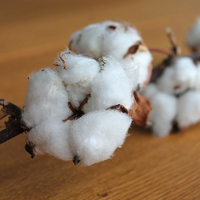Variability and inheritance of fiber length and wilt resistance in a complex 4-5 specific and backcross hybridization of cotton

Submitted: July 14, 2020
Accepted: February 2, 2021
Published: March 1, 2021
Accepted: February 2, 2021
Abstract Views: 2043
PDF: 387
Publisher's note
All claims expressed in this article are solely those of the authors and do not necessarily represent those of their affiliated organizations, or those of the publisher, the editors and the reviewers. Any product that may be evaluated in this article or claim that may be made by its manufacturer is not guaranteed or endorsed by the publisher.
All claims expressed in this article are solely those of the authors and do not necessarily represent those of their affiliated organizations, or those of the publisher, the editors and the reviewers. Any product that may be evaluated in this article or claim that may be made by its manufacturer is not guaranteed or endorsed by the publisher.

 https://doi.org/10.4081/jbr.2021.9243
https://doi.org/10.4081/jbr.2021.9243



